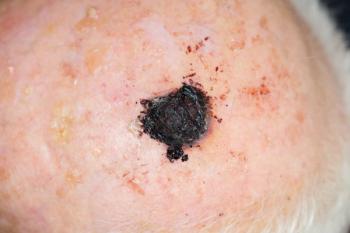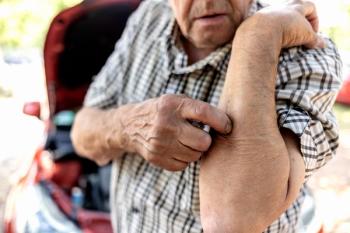
Jeff Stark, MD: Reviewing UCB's Abstracts Across HS, PsO, PsA, and More
At AAD 2025, UCB will present 5-year data for Bimzelx in psoriasis, highlighting rapid, durable responses and long-term safety for patients.
At the
Stark, who leads medical affairs for UCB's dermatology and rheumatology teams, emphasized the significance of this year’s data and its relevance for both dermatology and rheumatology communities.
"It's exciting to have the opportunity to talk about the UCB data being presented at AAD this year. There are indeed 18 abstracts, which is quite a lot of data to bring to the meeting," he told Dermatology Times.
The data being presented covers multiple approved indications for bimekizumab, including plaque psoriasis, hidradenitis suppurativa, psoriatic arthritis, ankylosing spondylitis, and non-radiographic axial spondyloarthritis.
"These abstracts do represent data across all of the approved indications for bimekizumab, those indications being plaque psoriasis, hidradenitis suppurativa, psoriatic arthritis, ankylosing spondylitis, and non-radiographic axial spondyloarthritis," Stark said. "And some of those fall, you might think, within the rheumatology space, and yet there is really an interrelatedness of these diseases such that the data from these clinical trials really are important across both the dermatology and rheumatology communities."
Among the most anticipated pieces of data was the presentation of the 5-year open-label extension study for bimekizumab in plaque psoriasis. Stark explained that 5 years of data represents substantial exposure and provides a clearer picture of both the safety and efficacy of the product in real-world clinical settings.
"Five years is a really important milestone, and many clinicians wait for that 5-year data to really have a level of comfort about the safety of a product, knowing that 5 years represents a significant amount of exposure," he noted. "But also about the efficacy and really wanting to know how that product works for patients, not just in the short term placebo-controlled periods of the study, but in a much longer term period that may represent more closely their clinical practice environment."
The long-term data demonstrated that bimekizumab offers not only rapid responses but also notable durability in treating plaque psoriasis. Stark noted that 5-year data showed exceptional outcomes, particularly when considering PASI 90 (90% improvement in Psoriasis Area Severity Index) and PASI 100 (complete skin clearance).
"We see, for example, out at 5 years... we're seeing PASI 90 responses at 5 years in the upper 80%. Even when we look at the most stringent outcome, of a PASI 100, complete skin clearance, patients in the mid-70% in the study are keeping a PASI 100 response over 5 years. It really is remarkable," Stark said.
Stark expressed his excitement about the significance of these results for patients, noting that achieving and maintaining such stringent outcomes over 5 years can profoundly improve quality of life for individuals with moderate-to-severe psoriasis.
In addition to the long-term data, UCB is also presenting data on bimekizumab's efficacy across diverse patient populations. This includes efficacy in patients with varying comorbidities and demographic characteristics, which is crucial for clinicians when choosing the most suitable therapy for each individual patient. Stark highlighted the importance of tailoring treatments based on individual patient needs.
"This is important because when clinicians are choosing a therapy for their patient, they're thinking about that individual patient and what their comorbidities may be, what their demographics may be," he said.
Reference
- Bimzelx (bimekizumab-bkzx) two-year data at AAD showed potential to eliminate draining tunnels in hidradenitis suppurativa (HS), and reduction in disease burden. News release. UCB. March 7, 2025. Accessed March 7, 2025.
https://www.ucb.com/newsroom/press-releases/article/bimzelxr-bimekizumab-bkzx-two-year-data-at-aad-showed-potential-to-eliminate-draining-tunnels-in-hidradenitis-suppurativa-hs-and-reduction-in-disease-burden
Newsletter
Like what you’re reading? Subscribe to Dermatology Times for weekly updates on therapies, innovations, and real-world practice tips.


















